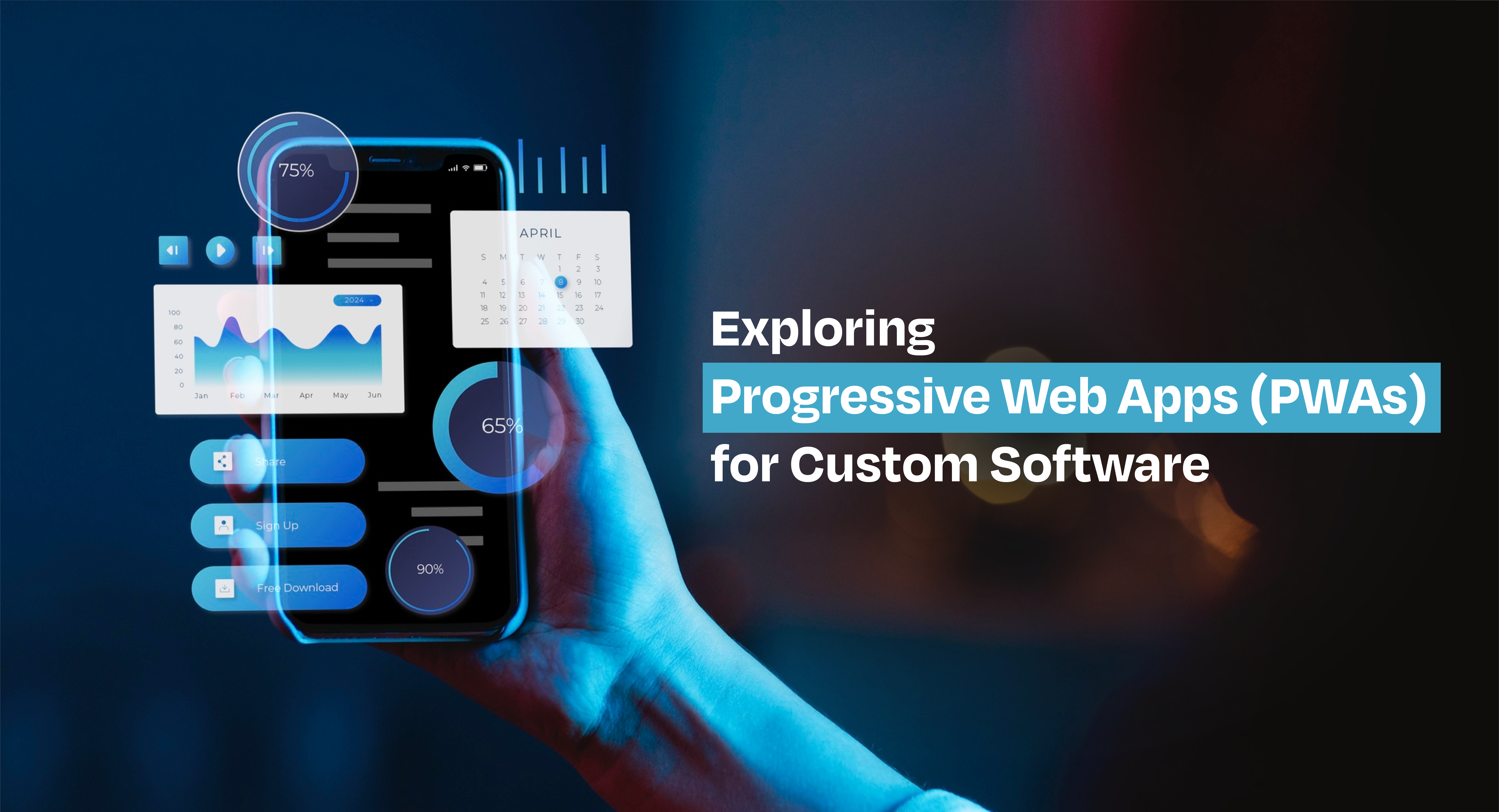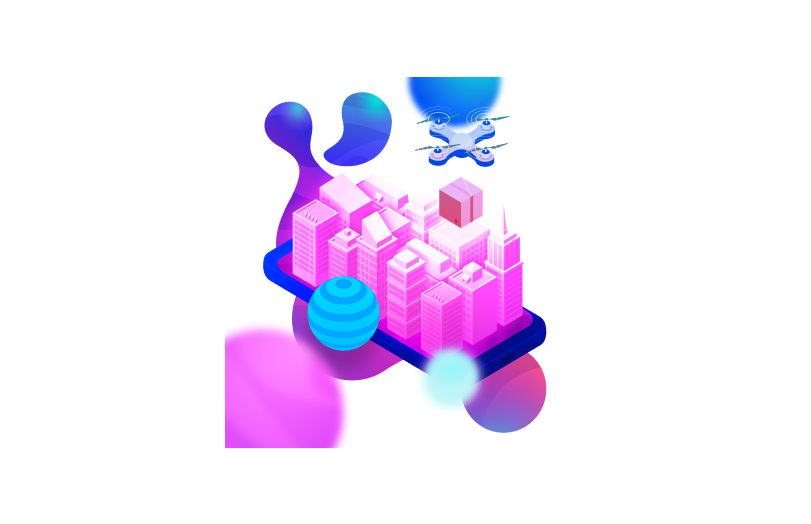In today’s digital world, user experience is very important. Progressive web apps (PWAs) have become a strong option. They use web technologies to connect websites and native apps. PWAs offer a fast, reliable, and enjoyable user experience. This experience is similar to what you find in native apps. At the same time, they provide the flexibility and reach of the web.
Understanding Progressive Web Apps (PWAs)
Progressive Web Apps (PWAs) bring together the best features of web and mobile apps. They offer a smooth user experience. PWAs use modern APIs to include features like push notifications, which are usually found in native apps. With service workers and a web app manifest, PWAs can work offline. Users can also add them to their home screen without needing an app store. PWAs focus on progressive enhancement to improve their functionality on modern browsers. This makes them a great option for businesses that want to connect with users effectively across different devices.
The Evolution of Progressive Web Apps in Custom Software Development
The rise of PWAs has changed custom software development in a big way. They provide a strong choice compared to traditional native app development. PWAs let developers create apps that work on many platforms using web technologies they already know. This saves time and money. This method, called progressive enhancement, aims to create a basic experience that works on all browsers and devices. Then, it adds more features depending on what is supported.
Custom software development has seen huge benefits from PWAs. They are a flexible solution for different business needs. Whether you want a customer app, an internal tool, or a complex web application, PWAs can be a cost-effective and smart choice. They use current web technologies and can easily connect with different backend systems, making them perfect for businesses wanting to upgrade their software.
As web platform technologies keep improving, PWAs are likely to become even more powerful and adaptable. They will mix the features of web and native apps more closely.
Key Features That Define Progressive Web Apps
Progressive web apps, or PWAs, have several important features that make them different from regular web apps. One main feature is that they can send push notifications even if the app is not open in a browser tab. This helps businesses keep users interested by sending updates, reminders, and promotions right to their devices.
PWAs can also be added to the home screen like native apps. This makes it easy and fast to access the app, which is good for convenience and finding it. When you open a PWA from the home screen, it launches in a separate window. This gives you a full app experience without seeing the browser’s address bar or tabs.
Additionally, a great feature of PWAs is that they can work offline or in places with low internet. They use service workers to cache important things and resources. This means users can still use the app even when there is no internet connection.
Check out an article on 7 Winning B2B E-commerce Strategies for 2025.
The Impact of Progressive Web Apps on Custom Software Solutions
Progressive web apps have changed how we view and use web applications. They blend features of regular websites and native apps. Their effect goes beyond just tech. They provide companies a smart way to connect with users and attract more people.
By mixing the easy access of the web with the speed and functions of native apps, PWAs are changing the game in creating custom software. More and more businesses are using PWAs to improve user experience, boost engagement, and make development easier.

Enhancing User Experience Across Platforms
One of the biggest benefits of PWAs is that they offer a good user experience on many devices. With one codebase, businesses can reach users on desktops, smartphones, and tablets. This means there is no need to create separate versions for different systems.
PWAs are designed to work well on any platform through adaptive design and responsive layouts. They change content and features based on the device and screen size. This gives users an easy and enjoyable way to interact, no matter what device they are using.
This not only cuts down on development costs but also makes sure users have a smooth experience. They can enjoy the same features and brand look on all their devices. This leads to better user experience and higher engagement.
Improving Performance and Reliability
PWAs have great performance and reliability, often competing with native apps. Unlike native apps, which you need to download from app stores, you can access PWAs right away through a web browser.
PWAs are easy to find on search engines because they are like special websites. When someone searches for a product or service, a well-optimized PWA can appear at the top of search results. This can attract more visitors and reach more people.
Using service workers and caching helps PWAs load quickly, even on slow networks. This gives users a smooth experience. Because of this better performance, users are happier, and there are fewer people leaving the site. This can also lead to better conversion rates.
Check out an article on Why Your Business Needs a Mobile App Now.
How Progressive Web Apps Offer Cross-Platform Compatibility
Progressive web apps (PWAs) are great at working on many devices because they use web standards and modern browser powers. By using tools like HTML, CSS, and JavaScript, PWAs can run well on any device that has a modern web browser.
What makes this method useful is that developers can write code one time and use it everywhere. This saves a lot of time and money during development. Unlike native apps, which need different code for each operating system, PWAs provide a single way to build. This makes it easier to take care of and update the apps.
The Role of Service Workers in Progressive Web Apps
Service workers are important for progressive web apps (PWAs). They help with offline features, push notifications, background syncing, and other key things that improve the user experience. Service workers are independent JavaScript files. They work separately from the main browser, allowing them to handle network requests and talk to the user’s device.
One key feature of service workers is caching. This allows PWAs to save website assets like HTML files, CSS styles, JavaScript code, images, and more on the user’s device. Because of this, the PWA can load fast and still work even if the device is offline or has a weak internet connection.
Service workers also make it easy to send push notifications. This feature helps engage users even if the PWA is not open. With the Push API, developers can send notifications that give users timely updates, reminders, promotions, and other useful information.
Adaptive Design for Various Devices
To make sure a PWA works well on different screen sizes and devices, it’s important to focus on a good user experience. This is where responsive design helps. It allows web pages to change their layout and content based on the device being used.
PWAs use CSS media queries. This tool helps developers set different styles depending on the screen size, orientation, and resolution of the device. As a result, layouts become flexible. They can adjust easily to different viewports, making sure that the content looks right on all devices.
By using responsive design, PWA developers can make user interfaces that work well and look good on many devices. Whether it’s a large desktop monitor or a small mobile phone, this flexibility helps to improve the overall user experience. It also increases user satisfaction and keeps them engaged.
Here’s an article on 10 Must-Have JavaScript Libraries for 2024.
The Advantages of Progressive Web Apps for Businesses
The use of progressive web apps can give businesses many benefits. They can make user experience better, lower development costs, and boost their digital presence. One major benefit is that businesses can reach more people. This is because PWAs are not limited by app stores or specific device operating systems.
Progressive web apps help businesses stand out. They allow companies to offer fast, engaging, and reliable web experiences. These experiences can be as good as those of native apps.
Cost-Effective Development and Maintenance
Developing and keeping native apps for different platforms like iOS and Android can be very expensive. Businesses must spend money on separate teams for each platform. They also need to handle different codebases and follow various app store guidelines, which can be complicated.
Progressive Web Apps (PWAs) provide a cheaper option by using web technologies. With a single codebase, businesses can reach many devices and operating systems. This means they save time, resources, and money during development.
In addition, maintaining and updating PWAs is easier. Instead of sending updates through app stores, which can take time, updates for PWAs can be done right away. This way, users always have the latest version at hand.
Increased Engagement and Conversion Rates
Engagement and conversion rates are important for businesses that want to do well online. Progressive web apps (PWAs) are a great way to improve these rates. They offer a fun and interactive user experience. This keeps users coming back and helps increase conversions.
One key feature of PWAs is push notifications. These allow businesses to send important messages to users’ devices, even when the app is closed. This help keeps users engaged by sharing updates on new features, special offers, and personal suggestions they might like.
Also, PWAs are fast and reliable. When an app loads quickly and works well, users tend to stay longer. This leads to more engagement, higher conversion rates, and overall happy users.
Here’s an article on The Ultimate Guide to Mobile App Development Lifecycle, check it out!

Step-by-Step Process to Build Your First PWA
Creating a progressive web app can seem hard at the start. However, it doesn’t have to be that way. If you break the process into easy steps, people without much web development experience can still build their own PWAs.
The sections below will give you clear steps to follow. They will help you set up your development environment and launch your first web app.
Step 1: Setting Up the Development Environment
Before starting with PWA development, it’s important to set up a good development space on your computer. This helps you have all the right tools and software to make, test, and launch your PWA easily.
First, you need a good code editor to write your HTML, CSS, and JavaScript. Some popular options are Visual Studio Code, Sublime Text, and Atom. Each of these editors has many extensions and plugins that can help you work faster and more efficiently.
Next, make sure you have a modern web browser installed. Good choices include Google Chrome, Mozilla Firefox, or Microsoft Edge. These browsers come with great developer tools that help you check elements, fix code, and watch performance while you develop your PWA.
Step 2: Creating the App Shell
The app shell is the basic HTML, CSS, and JavaScript you need to show the main interface of your progressive web app. It gives a quick layout that appears right away. This helps users get quick feedback while the rest of the content loads in the background.
First, you need to make three files: index.html, style.css, and app.js. In the index.html file, set up the basic HTML structure. Link this with the style.css file for styling and the app.js file for added functionality. Make sure to include the viewport meta tag. This will help your app look good on different devices.
Next, go to the style.css file. Here, add styles to give your app shell its look. Set the colors, fonts, layout, and other design features. Use clear CSS selectors and properties. This will keep your code easy to read and organized.
Step 3: Implementing Service Workers for Offline Capabilities
Service workers are important for letting your PWA work offline and do background tasks. These JavaScript files act as a link between your PWA and the network. They help you catch network requests and manage how your app works, whether it’s online or offline.
To set up a service worker, you need to create a file called service-worker.js in your main folder. Here, you’ll write how to register the service worker, watch for certain events, and manage caching. Start by registering the service worker in your app.js file.
The ‘install’ event happens when you first register the service worker. This event is usually used to cache important files. You can list the files you want to cache in an array and use the ‘cache.addAll()’ method to save them.
Step 4: Adding the Web App Manifest for Installability
The web app manifest is a JSON file. It gives details about your PWA. This includes its name, icons, start URL, background color, and display mode. The manifest helps users install the app on their home screen. When installed, users can quickly access your PWA on their device.
To create a manifest file, make a file called manifest.json in your main folder. In this file, list important details about your PWA. Start by adding the “name,” “shortname,” and “starturl.” These will show the app’s name on the home screen, a shorter version of the name, and the URL that opens the app.
Then, note down the “icons” array. This holds icons in different sizes for different devices. Each icon must include a “src” (source) attribute to link to the icon file and a “sizes” attribute to show the icon’s size.
An article on Stay Ahead of the Curve: Must-Have UX Design Tools 2024 might interest you.
Step 5: Testing and Debugging Your Progressive Web App
Before deploying your PWA to a live environment, it’s crucial to thoroughly test and debug it to ensure that it functions correctly across different browsers, devices, and network conditions. Testing helps identify potential issues early on, allowing you to deliver a polished and enjoyable user experience.
One of the most valuable tools for testing PWAs is Google Lighthouse, an open-source tool that audits web pages and provides performance, accessibility, best practices, SEO, and PWA scores. Lighthouse can be accessed directly within the Chrome browser’s developer tools or as a Node.js module.
To run a Lighthouse audit, open your PWA in Chrome, navigate to the developer tools, and select the “Lighthouse” tab. The audit results will highlight areas for improvement, providing specific recommendations and insights to enhance your PWA’s quality.
| Category | Description |
| Performance | Measures how quickly content loads and becomes interactive |
| Accessibility | Checks for common accessibility issues that may affect users with disabilities |
| Best Practices | Ensures adherence to web development best practices |
| SEO | Evaluates the searchability and optimization of your PWA |
| PWA | Verifies if your web app meets the criteria for being a progressive web app |
Conclusion
Progressive Web Apps, or PWAs, have changed the way we create software. They make the user experience better, improve performance, and work on different platforms. This helps businesses save money and engage more with their users. If you want to build your first PWA, we have easy steps to follow. Using PWAs can help your business grow. Don’t miss your chance to explore this new technology. Contact us to find out how PWAs can improve your custom software solutions.
Frequently Asked Questions
A progressive web app (PWA) is known for using service workers and a web app manifest. It also has strong HTTPS security and a design that works well on different devices. Together, these features create a fast, reliable, and fun user experience.
PWAs improve user experience with key features. They send push notifications that keep you updated. They also work offline, which means you can access them anytime. Plus, you can install them on your home screen, giving a convenient and app-like feel.
Yes, PWAs can work offline. Service workers help PWAs keep important resources and data stored. This lets them load content and work even when there is no internet connection. It is useful for users in places with spotty connections.



